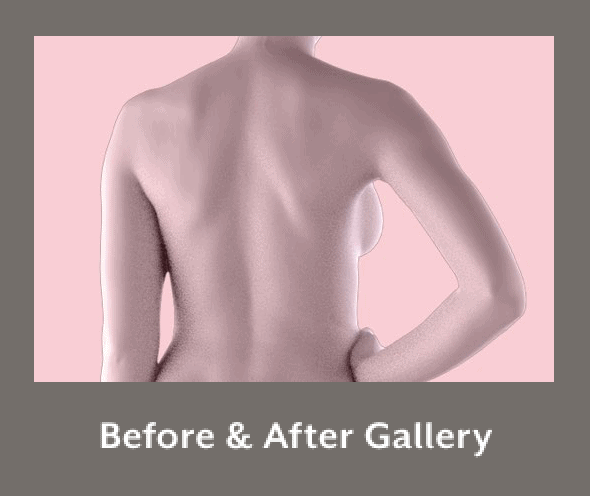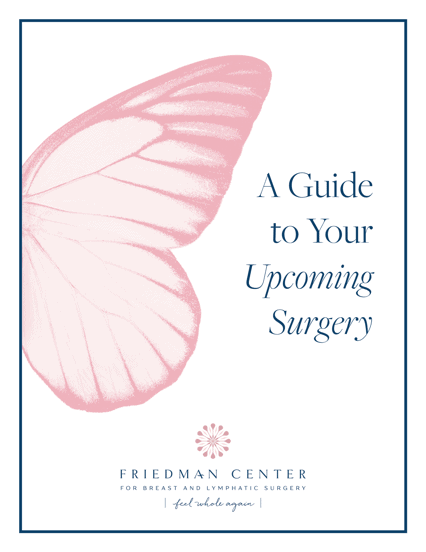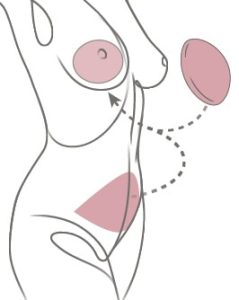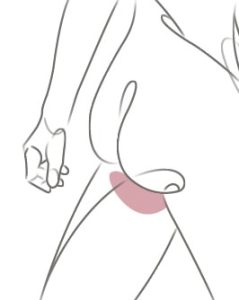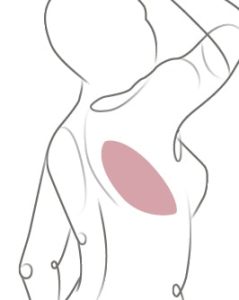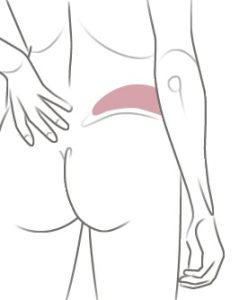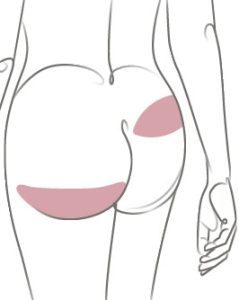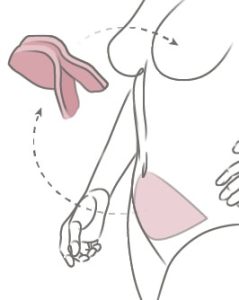About Breast Reconstruction » Natural Tissue (Flap) Reconstruction » Alternative Tissue Sites » Thigh Flap Procedures
Thigh Flap Procedures (PAP/TUG)
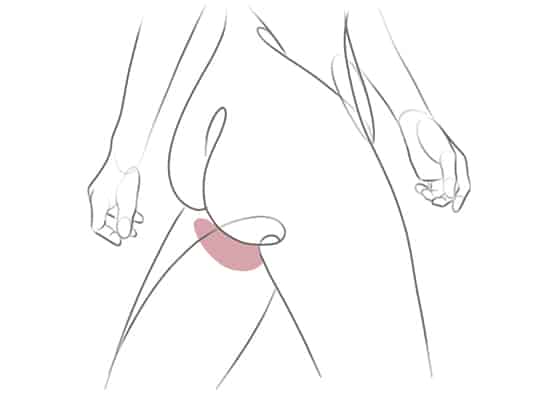
On this page

On this page
Tissue from the abdomen is usually preferred for breast reconstruction and is the most frequently used tissue for natural tissue breast reconstruction. However, there can be good reasons (such as lack of abdominal fat, previous abdominal surgery, or wishing to avoid an abdominal scar) for using alternative tissue donor sites, such as the thigh, buttock, or back.
The tissue of the upper thigh is particularly soft and can be sculpted into a natural-looking smaller breast. Thigh flaps result in less contour distortion than buttock flaps. Thigh flaps, also known as TUG/VUG/DUG flaps, are made from the fat, skin, and occasionally a small amount of muscle from the upper thigh. PAP flaps are another type of thigh flap. They spare muscle and contain only skin and fat.
Procedure
Your surgeon may perform noninvasive imaging of the upper thigh before your procedure. This will help to determine the type of thigh flap that’s best for you. Imaging can show which of your blood vessels are healthiest and will be the most useful in a thigh flap.
TUG/VUG/DUG flaps
The TUG (transverse upper gracilis), VUG (vertical upper gracilis), and DUG (diagonal upper gracilis) flaps are all based on the gracilis muscle, a very small muscle in the upper thigh. This muscle contains the blood vessels that will be used to supply blood to the new breast. The gracilis muscle is removed, along with fat and skin, as part of the flap during the TUG/VUG/DUG procedures. Although these aren’t considered muscle-sparing procedures, most women don’t notice the loss of the gracilis muscle.
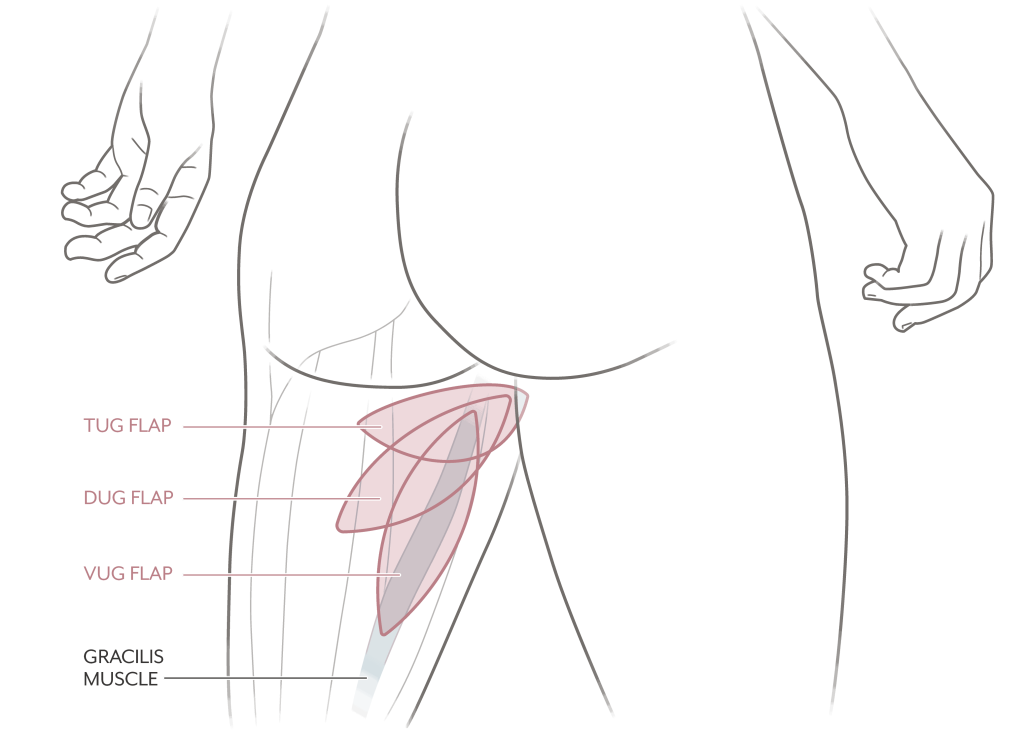
PAP flap
The PAP (profunda artery perforator) flap is an advanced microsurgical technique that uses the upper inner and back of the thigh to create the new breast. No muscle is taken from the thigh. The new breast’s blood supply is provided by perforator vessels of the upper thigh, which are removed as part of the PAP flap.
All thigh flaps are free-flap procedures: The tissue flap is completely separated from the thigh and transplanted to the chest. The tiny blood vessels in the flap are attached to similar vessels in the chest using microsurgery. The flap is then shaped into the new breast.
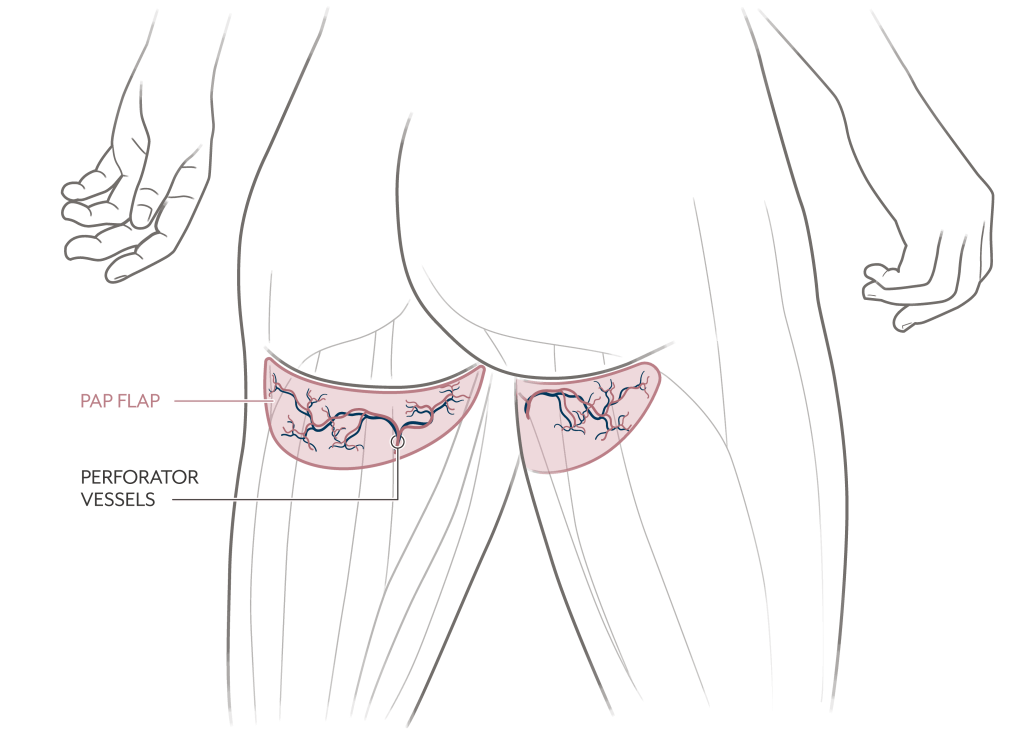
Your Recovery
Recovery Time
The usual hospital stay for a thigh flap procedure is 1-3 days. You’ll be able to return to most activities after 6 weeks. It can take up a year for your tissue to completely heal.
Expect to Feel
Expect soreness, swelling, and bruising at all surgery sites, including the thigh. You might experience some loss of sensation, which is often temporary at the donor tissue site.
Scarring
The location of your scar depends on which thigh flap procedure you have.
The thigh incision for the TUG flap procedure runs sideways just under the groin crease.
The thigh incision for the VUG flap procedures runs vertically along the inner thigh.
The thigh incision for the DUG flap procedure runs diagonally along the inner thigh.
The thigh incision for the PAP flap procedure runs along the groin just below the crease of the lower buttock.
Scars typically fade over 12-18 months. Your breast scars will largely depend on the type of mastectomy you end up having.
Additional Procedures
- Additional cosmetic procedures, such as nipple and areola reconstruction, may be done to enhance the appearance of the new breast.
- The removal of tissue from the thigh has a tightening effect, much like an inner thigh lift. Additional procedures on the other leg may be needed to restore symmetry.
Things to Consider
- For many women, the upper thigh region does not have a large amount of available tissue. For this reason, thigh flaps are typically done for women who would like a small-to medium-sized breast.
- Because no muscle is removed during a PAP flap procedure, recovery may be less painful than with the TUG/VUG/DUG procedures.
- Multiple scars: Thigh flaps can result in two to four surgical sites (on one or both breasts and in one or both thighs). That means you’ll have to take care of a number of surgical sites. There may be an additional surgical site if you also have and axillary dissection (underarm lymph node removal) at the same time.
Contraindications and Alternatives
You may not be a candidate for a thigh flap procedure if there isn’t enough fat tissue in your upper thigh or if previous surgery has damaged blood vessels in that area.
Alternative donor tissue sites include the abdomen, buttock, upper back, and lumbar (lower back) region. If very little fat tissue is available at any donor site, you may consider a stacked flap procedure or hybrid reconstruction.























